Community Responses to Urban Development: Amplifying Indigenous and Newcomer Oral Histories in Toronto, Ontario
Case Study prepared by Julia Mason, Carleton University
Keywords: Community Organizing, Gentrification, Oral History, Toronto, Urban Development
- Lessons Learned
- Description
- Timeline
- Rightsholders and Stakeholders
- Heritage
- Sustainability
- Assessment and Measurement
- Works Cited
LESSONS LEARNED
The Block by Block project serves as an example of a community response to socially and environmentally unsustainable urban development pressures in stigmatized neighbourhoods in the City of Toronto. It conserves the heritage of these communities by collecting their stories. In engaging with the online exhibit, it is apparent that the four neighborhoods included in the project become heritage through community members’ relationships to homemaking, the contributions they make to their own communities, and the physical spaces that they associate with home and community like restaurants, homes, and small businesses. These stories are personal, family, and community histories directly grounded in place. Understanding these connections challenges us to develop a more holistic understanding of heritage outside of the tangible and intangible, and natural and cultural divides.
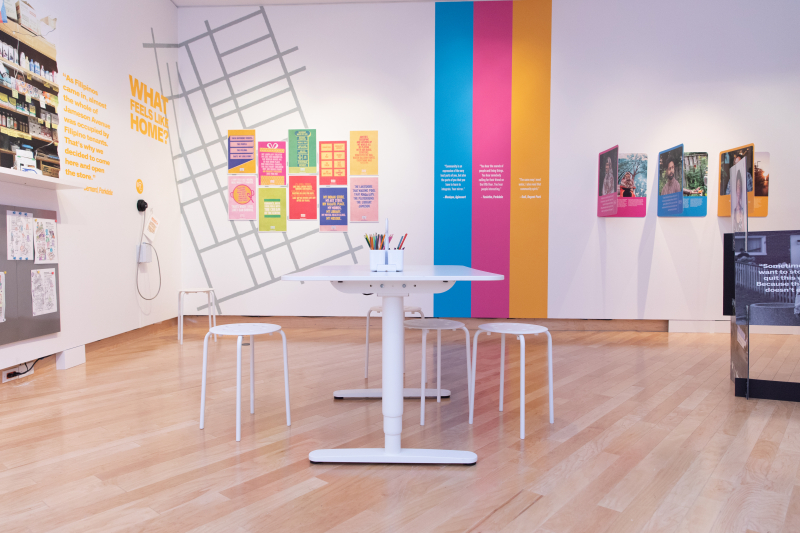
Additionally, Block by Block subverts the idea that to be sustainable, we must build redevelop urban spaces and build greener buildings. The online exhibition demonstrates that preserving the buildings and the communities who already live in these neighbourhoods is sustainable, in that it takes advantage of what has already been built and rejects socially unsustainable phenomena like gentrification and displacement. Zhixi Zhuang, a Registered Professional Planner in Ontario and Associate Professor at Toronto Metropolitan University’s School of Urban and Regional Planning, suggests that equity-based civic engagement is necessary in (re)developing cities (Zhuang, 3). Planning for urban development should involve “culturally sensitive spaces, amenities, programming and services” in diverse cities like Toronto (Zhuang, 7). By drawing attention to community members’ concerns about urban development and revitalization projects, they highlight the need for this kind of engagement.
This presentation was delivered on November 24th, 2022 to the class in CDNS 5403/4403. It provides a summary of the Block by Block project including a description, timeline, and analysis related to the heritage and sustainability aspects of the project.
DESCRIPTION
Under the pressures of urban development, Toronto is becoming increasingly unaffordable for community members who have lived there for decades and sometimes generations (Metro Morning). Urban revitalization projects lead to mixed-income neighbourhoods, higher rent, and building more condos, which beyond having environmental impacts through building more also pushes people out of their neighbourhoods (Metro Morning). Gentrification has been a recognized phenomenon in Toronto for decades, and particularly “gentrification-by-upgrading”, through corporations renovating and upselling properties which are viewed as run down and neglected, has been pushing already marginalized communities further to the margins (Hawkins et al., 2). This also poses a risk to these communities’ heritage if they lose access to space and community through physical displacement.
The Agincourt, Parkdale, Regent Park, and Victoria Park neighbourhoods located in Toronto, Ontario currently face these kinds of development pressures, in part because of lower-income and racialized communities inhabiting them being highly stigmatized (“The importance of story and memory – Floor audio”). Block by Block is a participatory multimedia program led by the Toronto Ward Museum. Between 2019 and 2021, Block by Block focused on these four Toronto neighbourhoods, which are landing sites for migrant communities and also have significant Indigenous populations (Block by Block). The program aims to preserve “stories of migration, settlement and civic life” which are threatened in these communities by urban redevelopment and revitalization (Block by Block).

The Block by Block program involves training youth from the four neighbourhoods to collect and interpret oral histories from Indigenous and newcomer community members (Block by Block). Because the storytellers are recorded, their stories are shared in their own words and in their own voices, although at times they are summarized into articles by youth researchers. These articles always contain direct quotes from the storytellers.
In the 2019-2021 Block by Block project, 40 oral histories were collected per year through interviews conducted by youth researchers. The program culminated in 4 local exhibitions per year, 4 block parties per year, and in 2022, city-wide exhibitions and programming (“The importance of story and memory – Floor audio”). The stories are also displayed on the Block by Block website as an online exhibit, where videos and audio recordings are organized by neighbourhood and theme. Themes include arts and culture, community care, community organizing, discrimination and injustice, education, employment, housing, identity and belonging, Indigeneity, migration and arrival, neighbourhood change, and religion and spirituality.

In Toronto, conversations around these neighbourhoods do not frame them as places whose histories matter. Parkdale and Regent Park receive significant negative media attention, and Victoria Park and Agincourt generally receive very little public attention . The Block by Block program demonstrates that these neighbourhoods, their communities, and their histories are significant and worthy of preserving . They challenge the idea that redevelopment of these areas renders them “blank slates to be redeveloped” by connecting the cultural heritage value of undesignated sites with the experiences and histories of community members, many of whom have inhabited their neighbourhoods for decades or generations (“The importance of story and memory – Floor audio” – this entire par).
Taking an oral history approach to preserving this heritage “tells us less about events than about their meaning”, allowing for a truly impactful representation of the importance of these communities and their neighbourhoods (Lowry and Duke, 520). Lowry and Duke discuss sensitive curating practices for oral history which allow the snapshot of an exhibition to “convey an element of the experiences, emotions and opinions of all those that shared their memories” (Lowry and Duke, 520). By training youth from the same neighbourhoods as the storytellers and centring the voices of the storytellers, Block by Block is able to have this impact.
TIMELINE
The Toronto Ward Museum is described as a “museum without walls, dedicated to telling stories of migration in Toronto” (“The importance of story and memory – Floor audio”). It was incorporated as a non-profit organization in September of 2015 and became a registered charity in 2018 . It is named after The Ward, a former Toronto neighbourhood (now known as the Discovery District) where immigrants commonly settled in the late 19th and early 20th century. Its programming and exhibitions are all “co-developed and co-delivered by community partners, community members, young teams and professional artists” (The importance of story and memory – Floor audio”). Toronto Ward Museum aims to be “a cultural institution that strengthens our understanding of immigration history through innovation in interpretation and public engagement” (Toronto Ward Museum). The following timeline traces the history of the Block by Block project from its initial program in 2018 to November 2022, highlighting key events over the last several years.
Block by Block Project
| Period | Events |
| 2015 | Toronto Ward Museum is created as a non-profit organization. |
| 2017 | The first Block by Block project begins, funded by the Department of Canadian Heritage, the Province of Ontario, Six Degrees, and Artscape. This program focused on historic immigrant neighbourhoods across Canada. Stories are collected during this time from Côte-des-Neiges in Montreal; St. John’s Ward in Toronto; and Strathcona in Vancouver. |
| September 2017 | First Block by Block exhibitions take place in Montreal, Toronto, and Vancouver. |
| 2019-2021 | Block by Block begins to focus on Agincourt, Parkdale, Regent Park, and Victoria Park neighbourhoods. Youth researchers are trained, and story collection and interpretation takes place during this time. |
| October 2019 | The 2019 exhibitions take place in each neighbourhood. |
| August 2020-November 2020 | Block by Block: Stories of migration, life, and change in four Toronto Neighbourhoods exhibition takes place. |
| August-November 2022 | Searching Beyond Archives: Block by Block Exhibition takes place. |
RIGHTSHOLDERS AND STAKEHOLDERS
There are hundreds of people involved or invested in the Block by Block project who could and should be considered rightsholders and stakeholders, and at times their engagements and roles overlap.
Rightsholders:
The Indigenous nations whose traditional territories the neighbourhoods are located on are rightsholders in this context. Specifically, the Mississaugas of the Credit, the Anishnabeg, the Chippewa, the Haudenosaunee, and the Wendat peoples have traditionally cared for these lands (Block by Block). There is no available information discussing the consultation of these nations with this project, however, the Toronto Council Fire Native Cultural Centre is a program partner and Indigenous community members shared stories which are displayed in the online and in-person exhibitions.
The storytellers are rightsholders as well as stakeholders in this context because of the responsibility that the program has to care for and share their stories in the way that the storytellers want them to be cared for and shared.
Stakeholders
Toronto Ward Museum
- Gracia Dyer Jalea, Founding Executive Director (2018-2020)
- Perry Lupyrypa, Interim Executive Director (2020-2021)
- Brannavy Jeyasundaram, Co-Executive Director (2021-2022)
- Henrick “Shoolie” Sales, Co-Executive Director (2021-2022)
- Maggie Hutcheson, Block by Block Program Director and Lead Curator
Program Partners
- Agincourt Community Services Association
- City of Toronto Newcomer Office
- OCASI – Ontario Council of Agencies Serving Immigrants
- Regent Park Film Festival
- Ryerson University’s School of Urban and Regional Planning
- Toronto Council Fire Native Cultural Centre
- Toronto Public Library
- West Neighbourhood House
- Working Women Community Centre
Lead Funders
- Ontario Trillium Foundation
- Inspirit Foundation
Supporting Funders
- City of Toronto Cultural Hotspot
- Toronto Arts Council
- Employment and Social Development Canada
- City of Toronto Music Office
- University of Toronto Faculty of Information
- University of Toronto School of Cities
- Artscape
Participants
- 100 storytellers, all named on the Block by Block website.
- Countless staff and volunteers who took on different roles in the project, many of whom are also listed on the Block by Block website, including but certainly not limited to: Block by Block Local Program Coordinators, Block by Block Young Researchers/Curators, language interpreters, researchers, photographers, audio editors, graphic designers, videographers, web designers, and so on (Block by Block).
Jurisdictional
- City of Toronto
Community
- Residents of the Agincourt, Parkdale, Regent Park, and Victoria Park neighbourhoods, regardless of whether they participated as storytellers.
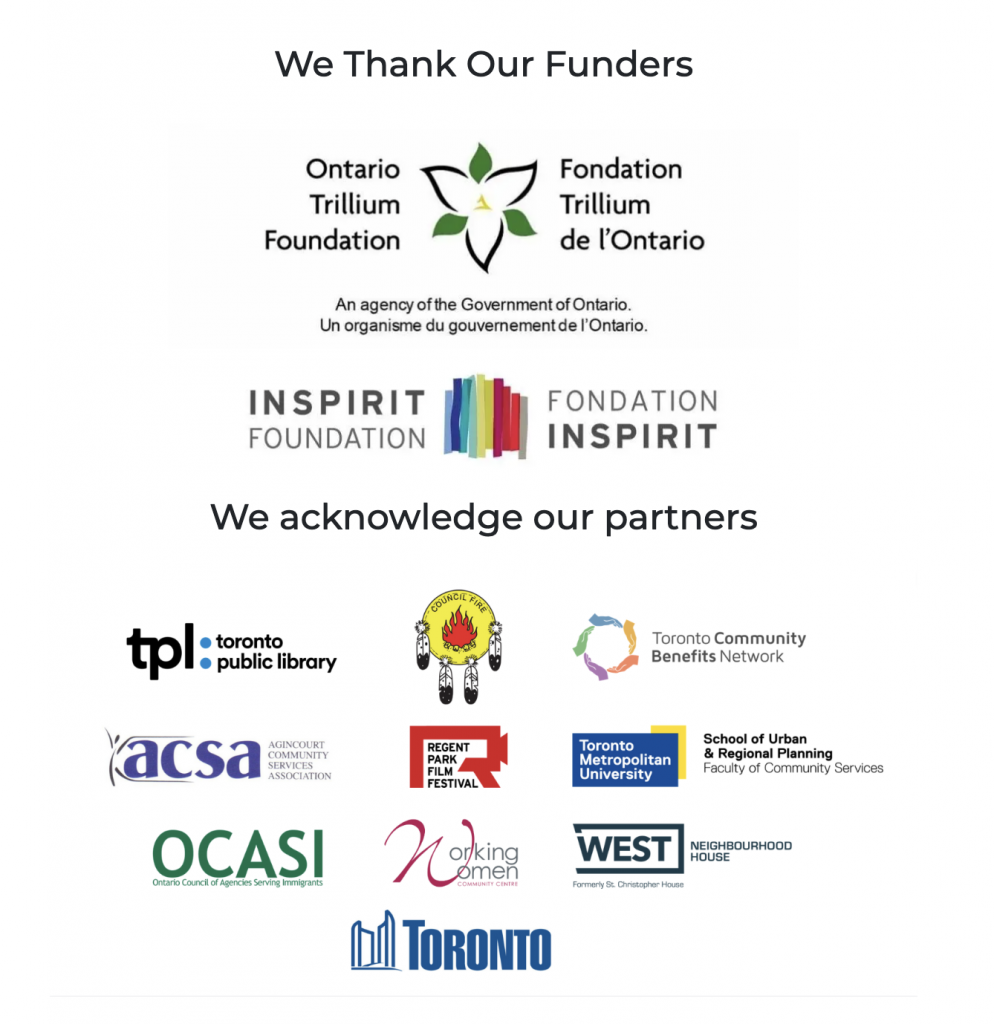
HERITAGE
Block by Block conserves the heritage of both the neighbourhoods themselves and those living in them. Most of the heritage in these areas (cultural, built, natural, and intangible) is not designated ‘heritage’ and at risk due to urban redevelopment and revitalization projects. However, in July 2022, Toronto City Council adopted the Parkdale Main Street Heritage Conservation District Plan, establishing Parkdale Main Street Heritage Conservation District. This is a municipal heritage designation under Part V of the Ontario Heritage Act (City of Toronto). Several consultation sessions were held between 2016 and 2022, including those specifically held with Indigenous community members. According to the Report for Action, Parkdale Main Street HCD was designated for its significance as an example of early village main street commercial development in Toronto, as well as its role as “social and community value as a welcoming place for Indigenous peoples and newcomers to build community” (Designation of the Parkdale Main Street Heritage Conservation District Plan under Part V of the Ontario Heritage Act, 21). It is important to note that the District does not encompass the entire Parkdale neighbourhood. At this time, it is unclear what the impact of the designation will be.
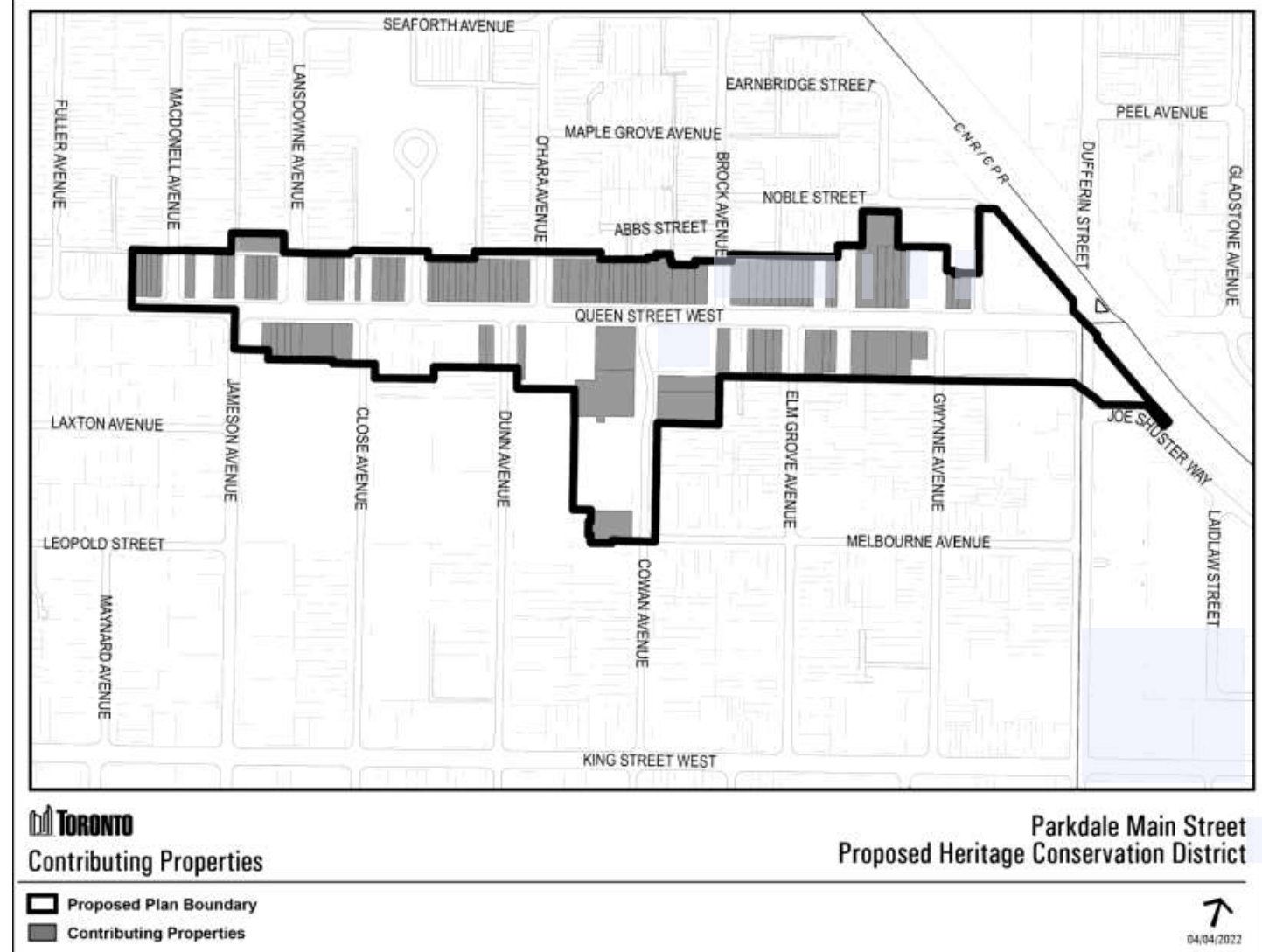
Natural and Cultural heritage: The program itself engages with the natural and cultural heritage of Indigenous and newcomer communities through the oral histories told by the storytellers. Storytellers did not necessarily make distinct their connections to different forms of heritage, rather, they often spoke about their intangible cultural heritage as connected to tangible natural and cultural heritage. Their stories are deeply tied to place and space. For example, Rhonda Lucy, a Mohawk and Ojibwe Two-Spirited resident of Parkdale identifies the Parkdale Community Centre as a space where she was able to run her Sun Raven arts program and find her purpose “(Rhonda Lucy | Parkdale 2021”). Natural heritage is embedded within this as well, as demonstrated by Shaina-Sarah Evero Isles Fedelin Agbayani, a first-generation resident of Agincourt who locates community care within the land. They state that the community is the land, and they are in the process of creating a healing arts space in Scarborough to continue to further facilitate this connection (“It Always Comes Back to Land”).
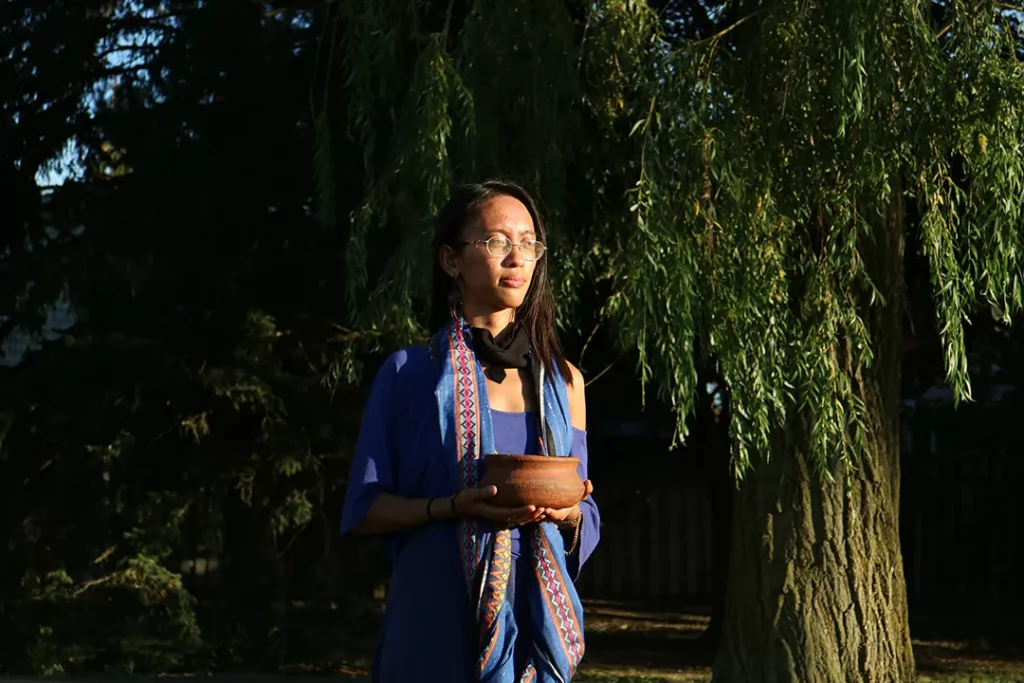
The cultural heritage of these neighbourhoods lies in the physical places and the stories and histories. Ultimately the project draws attention to the risk posed by redevelopment projects in Toronto to these communities’ heritage.
SUSTAINABILITY
The environmental, social, cultural, and economic sustainability related to Block by Block are interconnected. Urban development and revitalization in these neighbourhoods have resulted in the development of new buildings, particularly condos alongside other new construction, as opposed to making sustainable use of buildings that already exist. This is not only environmentally unsustainable, but also economically and socially unsustainable as it has led to gentrification in the four neighbourhoods, rendering them unaffordable for marginalized communities to live in. Even green developments such as Parkdale’s ‘green streetscape’ redevelopment have contributed to the gentrification of this space (Parish, 264). This impacts cultural sustainability as immigrant and Indigenous communities are displaced by redevelopment and revitalization, disrupting cultural networks and networks of care.
The Block by Block project responds to sustainability pressures and in itself finds ways to be sustainable. Environmental sustainability is not explicitly discussed as part of the Block by Block project, however, Jahmeika Reid, resident of Victoria Park, makes mention of the environmental impacts of neighbourhood change (“Jahmeika Reid | Victoria Park 2021”). She mentions the air feeling drier, the trees becoming duller, and many trees being torn down in order to rebuild the neighbourhood (“Jahmeika Reid | Victoria Park 2021”). In listening to Jahmeika’s words, it becomes clear that there is an awareness within these neighbourhoods and within the Block by Block project of the relationship between conserving these stories and conserving the environment.
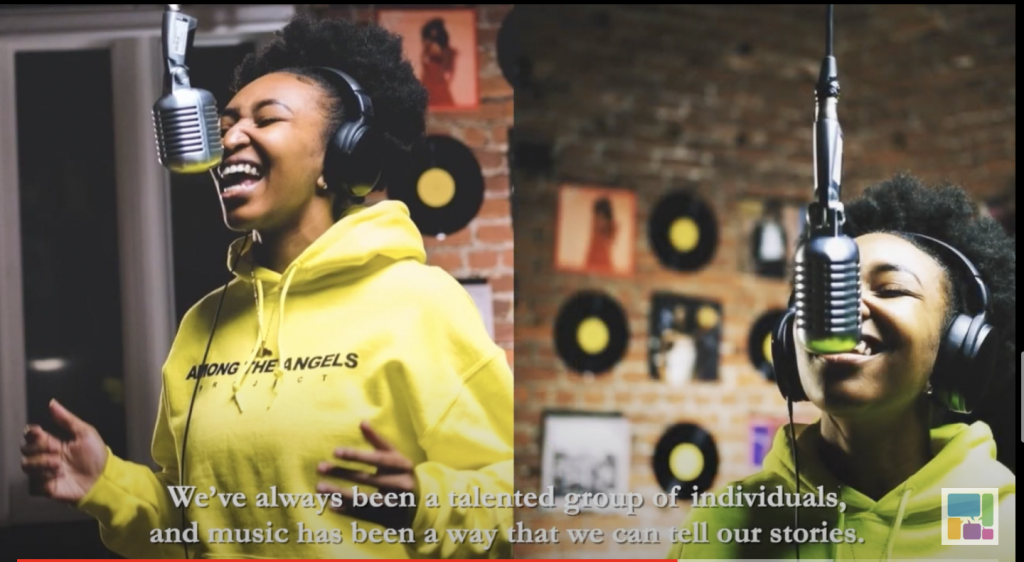
More frequently, the online exhibit draws attention to social, economic, and cultural sustainability. By preserving these histories and mapping cultural networks within each neighbourhood, Block by Block contributes to the social and cultural sustainability of the four neighbourhoods. It also draws attention to the impacts of urban development on lower-income and racialized families, amplifying their voices and their perspectives about these experiences. Bernard Farrol owns a store in Parkdale which sells Filipino products and has yet to be bought out, however, he expressed concerns in his interview about rising rent and the increase in competition from larger businesses (“Built by the community”).
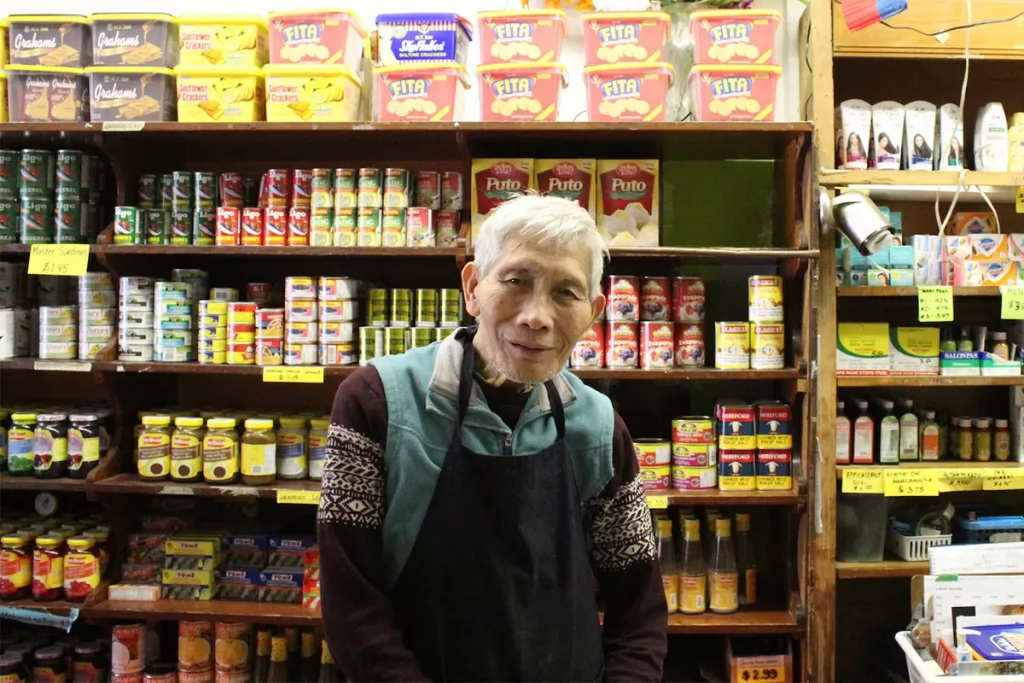
The issue of revitalization is particularly complex in terms of sustainability. Identifying a particular space as in need of revitalization “treats places as empty and void of meaning, ready to be made more meaningful” (Moran and Berbary, 656). At times, storytellers from these neighbourhoods would support revitalization in their neighbourhoods, particularly when they were able to be involved in advocating for their community’s needs during the consultation process. Ibrahim Huseein Afrah shared that it would be more difficult to acquire funding for the community’s needs without revitalization (“Ibrahim Afrah | Regent Park 2021”). Miguel Avila acts as a delegate in the Regent Park Coalition in order to ensure his community’s needs are met in the upcoming phases of revitalization (“Miguel Avila | Regent Park 2020”).
Others were less optimistic and had begun to feel the unsustainable impacts of development, for example in recognizing that families that were relocated during the revitalization process were unable to return to their revitalized neighbourhoods because of higher costs and reduced space (“Regent Park”). Facilitating this dialogue between communities through the Block by Block project can be socially sustainable because it allows those affected to identify actual issues to be addressed, rather than to continue to be further pushed to the margins.
ASSESSMENT AND MEASUREMENT
The Block by Block project is directly related to three United Nations Sustainable Development Goals (SDGs). This section will explore how the program is related to these SDGs in order to assess the sustainability of the program.
- SDG 10: Reduce inequality within and among countries: The Block by Block program facilitates advocacy by and for migrant and Indigenous communities in Toronto, particularly those who are low-income households, within these neighbourhoods. This is particularly relevant to target 10.2, “empower and promote the social, economic and political inclusion of all, irrespective of age, sex, disability, race, ethnicity, origin, religion or economic or other status” (UNESCO). Additionally, Block by Block relates to target 10.3, “Ensure equal opportunity and reduce inequalities of outcome” (UNESCO) by preserving cultural networks which support newcomers and Indigenous peoples in the four neighbourhoods. Taijah Abotassaway reflects on the role the Little Embers program at the Toronto Council Fire Native Cultural Centre in Regent Park, and Deany Peters shares how her community in Regent Park taught her “how to walk” as a low-income single mom (“Something That Couldn’t Happen Before.”; “Learning how to walk”). The support that these networks provide to community members enables them to access more opportunities, and Block by Block can be viewed as meeting SDG 10 by mapping out and preserving these networks of care.
- SDG 11: Make cities and human settlements inclusive, safe, resilient and sustainable: Block by Block highlights the efforts of residents opposing the gentrification of their neighbourhoods, particularly in the Regent Park neighbourhood. This is related to targets 11.1, “ensure access for all to adequate, safe and affordable housing and basic services” and 11.4. “strengthen efforts to protect and safeguard the world’s cultural and natural heritage” (UNESCO). Charlotte Schwartz draws attention to the lack of solutions being provided to those currently living in Regent Park, stating that it’s like putting makeup on the neighbourhood and not addressing the actual issues (“Charlotte Schwartz | Regent Park 2021”). This is one example of how the online exhibition calls out the need for basic services in these communities as opposed to the emphasis on redevelopment. By conserving these stories and drawing attention to the harmful impacts of gentrification and urban revitalization on heritage and sustainability, Block by Block meets target 11.4.
- SDG 17: Strengthen the means of implementation and revitalize the Global Partnership for Sustainable Development: Block by Block brings together many stakeholders in partnership in order to facilitate this program. As previously mentioned, there are 10 program partners and countless stakeholders who are directly involved, such as the funders, storytellers, and employees/team members. Through its engagement of so many parties, Block by Block meets Target 17.16 “Enhance the Global Partnership for Sustainable Development, complemented by multi-stakeholder partnerships that mobilize and share knowledge, expertise, technology and financial resources, to support the achievement of the Sustainable Development Goals in all countries” (UNESCO). Additionally, by engaging the broader Toronto community through its online exhibition and annual exhibitions and Block Parties, Target 17.17 “Encourage and promote effective public, public-private and civil society partnerships, building on the experience and resourcing strategies of partnerships” is addressed (UNESCO).
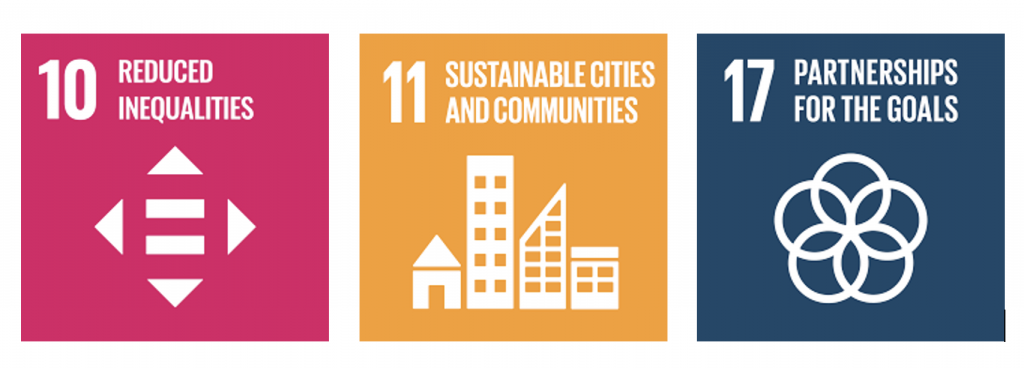
WORKS CITED
Books/Book chapters/Journal articles
- Hawkins, Jason, et al. “Measuring the process of urban gentrification: A composite measure of the gentrification process in Toronto.” Cities, vol. 126, 2022, pp. 1-9.
- Lowry, Sarah and Alison Duke. “Foundling Voices: Placing oral history at the heart of an oral history exhibition.” The Oral History Reader, 3rd ed., edited by Robert Perks and Alistair Thomson, Taylor & Francis Group, 2016, pp. 508-521.
- Moran, Robyn, and Lisbeth A. Berbary. “Placemaking as Unmaking: Settler Colonialism, Gentrification, and the Myth of “Revitalized” Urban Spaces.” Leisure Sciences, vol. 43, no. 6, 2021, pp. 644-660.
- Parish, Jessica. “Re-wilding Parkdale? Environmental gentrification, settler colonialism, and the reconfiguration of nature in 21st century Toronto,” EPE: Nature and Space, vol. 3, no. 1, 2020, pp. 263-286.
- Zhuang, Zhixi Cecilia. “Toronto: Planning for diversity, inclusion and urban resilience.” Toronto Metropolitan University, 2018, pp. 1-15.
Policies and reports
- Designation of the Parkdale Main Street Heritage Conservation District Plan under Part V of the Ontario Heritage Act. City of Toronto, 24 May 2022, pp. 1-23, .
- Parkdale Main Street HCD Plan. City of Toronto, n.d.
Websites and Videos
- Block by Block. Toronto Ward Museum, n.d.
- “Built by the community.” Block by Block, n.d., .
- “Change through the eyes of those living it: Block by Block exhibition chronicles four Toronto neighbourhoods.” Metro Morning, from CBC Radio, 11 Oct. 2022, .
- “Charlotte Schwartz | Regent Park 2021.” Youtube, uploaded by Toronto Ward Museum, 12 August 2022.
- “Ibrahim Afrah | Regent Park 2021.” Youtube, uploaded by Toronto Ward Museum, 12 August 2022, .
- “It Always Comes Back to Land.” Block by Block, n.d., .
- “Jahmeika Reid | Victoria Park 2021.” Youtube, uploaded by Toronto Ward Museum, 10 December 2021.
- “Learning how to walk.” Block by Block, n.d..
- “Miguel Avila | Regent Park 2020.” Youtube, uploaded by Toronto Ward Museum, 12 November 2020, .
- “Regent Park.” Block by Block, n.d.
- “Rhonda Lucy | Parkdale 2021.” Youtube, uploaded by Toronto Ward Museum, 10 December 2021, .
- “Something That Couldn’t Happen Before.” Block by Block, n.d., .
- “The importance of story and memory – Floor audio.” Youtube, uploaded by National Capital Commission, 18 February 2021.
- UNESCO. “10 Reduce inequality within and among countries.” United Nations Department of Economic and Social Affairs, n.d.
- UNESCO. “11 Make cities and human settlements inclusive, safe, resilient and sustainable.” United Nations Department of Economic and Social Affairs, n.d.
- “Vision and Mission.” Toronto Ward Museum, n.d.